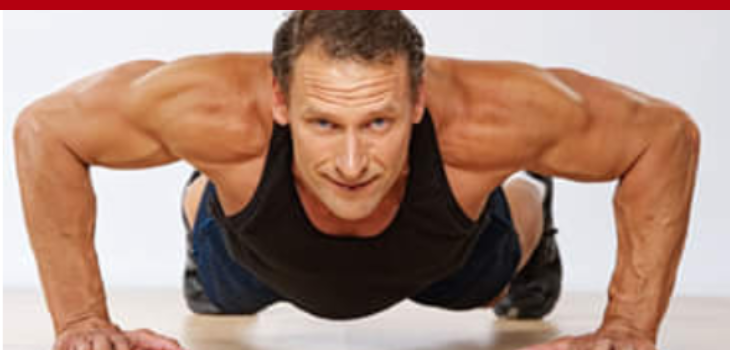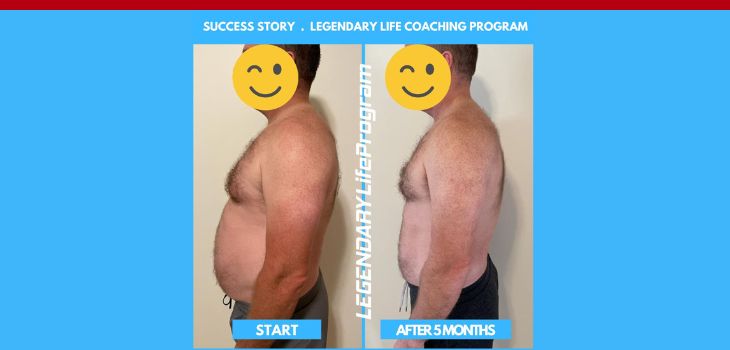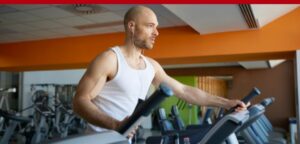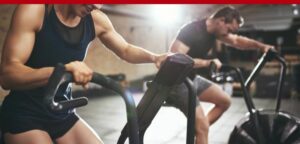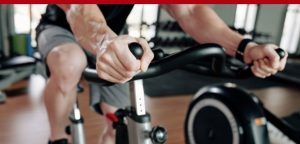Welcome back to Part 2 of the “How to Become Unstoppable in 2025” series! If you tuned into Part 1, you know we talked all about mindset—the foundation for any real transformation. After all, if your mindset isn’t right, staying consistent and overcoming setbacks becomes nearly impossible.
Now that we’ve set the stage with mindset, it’s time to dive into the next pillar of success: exercise. Whether you’re someone who spends hours in the gym without seeing results or you struggle to stick to a workout routine, this episode will clear up the confusion and help you get on track.
>>> Click here to listen to Part 1
Ted breaks down everything you need to know about building an effective fitness plan, starting with resistance training as the foundation. He also explains how to integrate cardio and mobility into your routine, why consistency matters more than perfection, and how to track your progress for lasting results.
If you’ve been frustrated with your fitness, this episode will give you the tools to create a routine that works for your life and sets you up for success in 2025. Listen now!
You’ll learn:
- Why resistance training is essential for long-term health and fitness
- The surprising ways muscle mass impacts your metabolism and overall health
- How to incorporate cardio into your routine without burning out
- The benefits of zone two cardio and when high-intensity training makes sense
- Why mobility work is key for recovery and counteracting stiffness
- The importance of consistency and progress tracking for lasting results
- How to customize a fitness plan that fits into your busy schedule
- And much more…
Related Episodes:
Links Mentioned:
Learn More About The Unstoppable After 40 Coaching Program
Join The Unstoppable After 40 Newsletter
Schedule a Strategy Call with Ted
Watch the Body Breakthrough Masterclass
Connect with Ted on X and Instagram
Ready to make 2025 your best year ever?
Together, we’ll craft a personalized plan to reclaim your health and transform your body in a way that fits your busy lifestyle.
If you want to learn more about our Unstoppable After 40 Coaching Program, click here!
We have limited spots, so click here to book a call now!
Podcast Transcription: Unstoppable in 2025: Part 2 – The Smarter Training Blueprint for Men Over 40 to Build Strength, Avoid Injuries, and Stay Consistent
Ted Ryce: Welcome back to the new year, new you 2025 series. Today, we're going to be talking about exercise. Now I'm doing this series in a very specific way, a very specific sequence. Why? Because episode one was about mindset. That's where I believe the vast majority need the vast majority of people need to start.
Because if you're not consistent, if you go on and off, because you have this idea of perfection that you can't stick with, so you keep, Oh no, I can be perfect. So now I'm going to do it all. No, I can't be perfect. So I'm going to give up. If that's you listen to the first episode and we'll clear up a lot of things for you so you can approach this the right way.
Now, after you have that handled time to handle exercise, why? Well, I'm not going to get into it because that would make this episode really long, but exercise is what I want you to focus on. Once you get your head straight, let's say. And I want to approach exercise from a very specific perception perspective, actually, for example, I deal with 2 types of clients, the 1st client, they don't know what to do, but they're in the gym doing things.
They're doing their zone too. They're lifting. They're maybe trying to do some interval training, following a workout routine that they got from an app, et cetera. Great. But if you don't see consistent change in your body month to month, then you're not doing it right. And I will clear up what you need to do in this episode.
Now the second type of client is different. The second type of client is like a client who I'm dealing with right now. Let me know if this sounds familiar. You know that exercise is important, but you're not sure what you should focus on and you're not consistent with exercise. When you do focus on exercise, for example, let's say you got a workout and you go to the gym and You're consistent for maybe a couple of weeks, but then life gets busy.
What happens? Start skipping the gym. Why do you skip the gym? Well, I don't have time to go to the gym to do an hour long workout. And so if I don't have time to go do an hour long workout, then I shouldn't go at all. If that's you, or if you resonate with the first example where you're in the gym all the time, but you're not seeing change in your body, this episode is going to clear things up.
So let's get into it. The first thing I want you to focus on is resistance training. Why resistance training is the most foundational type of training. And I want to tell you something because I always feel like when I say this, people say, Oh, well, you love to lift weights, I don't love to lift weights. I like doing Brazilian Jiu Jitsu.
Love that. In fact, borderline addicted to it. I really enjoy scuba diving. I like walking around new cities when I travel. For example, I'm in Buenos Aires right now. There's some fantastic places that I'm going to be visiting. That's what I love, but I don't love going to the gym. So don't think that don't say that, but why do I go to the gym and why do I say it's so important?
Because as we age, we lose muscle. In fact, over the age of 30, let's say you go from 30. You had kids got really busy in your career and you didn't lift weights consistently for an entire decade. And now you're 40 well, if that's your case, you've lost. Three to 8 percent of the muscle mass that you had at 30.
And this is a huge deal because not only did you lose muscle mass, by the way, you may have lost bone density as well, because putting stress through bone is how to increase your bone density. And another thing, lifting weights or muscles is a sink, if you will, a storage place. for sugar. So it helps you stay insulin sensitive and it helps take blood sugar or sugar out of your blood and put it into muscles.
So it helps prevent diabetes. Another thing, I'll just say one more thing here. Now, this isn't so sexy, but it's important. Let's say you get cancer. If you want to survive and come out the other side, And go through chemo and all the things, having more muscle mass is like insurance so that you don't die or come out the other side and be completely trashed by that, by, by cancer.
Okay, it's not sexy to think about. It's not fun to talk about. Of course, we just want to think about, you know, looking great naked, but there's so many reasons why muscle is important. That go beyond that, even if you don't want to be a bodybuilder, even if you don't want to, you know, whatever muscle is important.
It doesn't matter. You want to travel the world and want the strength to put your carry on in the overhead container. So you don't have to ask people to do it. Muscle is important. Okay. There's no way around it. It's the fundamental basic. So the basic form of exercise that maintains muscle mass and strength is resistance training, but we say resistance training instead of lifting weights because lifting weights Most people envision, oh, I'm using barbells, I'm using dumbbells, or maybe if you want to get fancy, you're using cables or kettlebells.
However, it doesn't matter the tool that you use. What matters is that you're applying resistance to your muscles. Now there's some nuance there because cardiovascular training also requires that you put resistance to your muscles, but we're talking about. No, where, where you can fatigue your muscles within, let's say, 30 reps or less.
All right, but there's some important things that you need to know about resistance training to get the most out of it. So, number one, consistency is key. Just after two weeks of no training, you start to lose strength and muscle. So let's say you've been consistent with your workouts and then you go for a two week break.
You will come back to the gym and you will be weaker. And you may even notice a little bit of a difference in your physique. And now you keep that up for months or even years. You're starting now from a low baseline. You've lost muscle. Even if your weight hasn't changed, actually, you should worry if you are a few months or even years behind and your weight hasn't changed, you better believe that your body composition has changed.
So you need to be consistent. And what I mean by body composition, you have lost muscle mass and you have gained fat. So stay consistent. It doesn't matter. I had a client, Dan, we started him with four 20 minute workouts. When he first started with me. So be consistent, whatever you choose to do, be consistent with it.
Number two, take sets close to failure. A lot of people tell me when I ask them, you know, like, Hey, how are you? How's your training going? Like, Oh, I'm bench pressing this much weight. I'm like, what is your goal here? Because if it's to be healthy, if it's to main month and maintain muscle mass. The weight doesn't matter.
How many sets you do don't matter. What matters is on every set that you do, you're taking it within, let's say two to three reps to failure. So listen in because I see this mistake all the time in gyms. People will say, well, I'm really sweaty or, oh, I got so out of breath. Doesn't matter. Did you get within two to three sets to, I'm sorry, two to three reps close to failure?
Yes or no? It is a yes or no answer. And if the answer is no, being out of breath, you just did cardio instead of building muscle. You got sweaty. The gym might've been hot, but it doesn't matter. Did you get within two to three reps of failure with that set with every set that you do? Or not. That is all that matters.
And what I recommend doing if you're new to this idea, Is to push it all the way to, you can't even do another rep. Now, you know what failure feels like. So what will happen is you'll be doing a set. Let's say you're doing a bench press and eventually when you do a rep, it'll, you'll be able to do it kind of fast and then I'll start getting hard and the, the, the reps start to slow down.
Now, you know, you're getting there. And of course, by the way, if you're, if you take something to failure, be really careful if it's something like a squat or a bench press, because you can hurt yourself, but what, what I, let me be clear here, do this, take it all the way, all the way to failure. On a bicep curl or a tricep extension or a lap pulldown machine that would also be okay, something safe so that you can experience it and then you can start to apply it to other exercises.
By the way, you have to be super careful doing this if we're talking about doing deadlifts or if we're talking about doing barbell squats. So some exercises do have a lot more risk and you want to be very careful that you stay away from failure. And when we talk about failure, by the way, we're not talking about, can you still move the weight we're talking about?
Can you move the weight with good form? What do I mean by that? So let's think about doing a bicep curl, like you're doing a bicep curl. And then all of a sudden your bicep just stops working. But you could throw your weight back and use your legs to get the weight up. That is what we want to avoid. And also you already hit failure, so you're good, but you got to get those sets close to failure because that is what leads to muscle, not getting out of breath, not getting sweaty, not anything else.
The next thing is focus on progress. In my coaching, uh, in my body transformation program, my clients track their workouts in the app. Why? Because you cannot do this in your mind. Even if you're highly intelligent, you can say, well, I used to lift weight. You can track general trends. You can say, well, yeah, a few months ago, I was using the 30 pound dumbbells.
And now I'm using the 50 pound dumbbells. But let's say you're doing bench press. Let's say you're doing, you know, you're, you're doing eight reps on the bench press with one 85, and then you. Put on another 10 pounds, let's say. And so you're now benching one 95, but guess what? You're only doing four or five reps.
You don't know if you've progressed. You just know that you're, you're lifting heavier weights, but also your reps went down. That's normal. But how you know that you're making progress is that you go up 10 pounds. Let's say you hit five reps, but the next workout, you're hitting six reps. The next workout after that, you're hitting seven reps, because if that's not happening, if you just load up the barbell and then you're stuck at five reps, and for some reason you just can't progress, you're not building more muscle.
You need to focus on progress and tracking your workouts is the way to do this. Now, I want to talk about something that comes up often because. Some people are like, yeah, but I don't like using heavy dumbbells. I feel like I've maxed out the dumbbells. You know, I'm doing like 20 reps with the 50 pounders that are available in the gym or 60 pounders, let's say, and.
I don't want to go up to the eighties, seventies or eighties, because I feel like those are even dangerous to get into position. You are correct. And that's why it's important to switch to exercises that are easier to load and safer. You do not have to use dumbbells to lift. You can use machines. You can use a Smith machine.
You can use a barbell and have a spotter there. You want to make sure that, and if you don't have a spotter, okay, then switch to an exercise that doesn't require a spotter so that you can continue to progress. You can use cables, but keep in mind, yes, you are correct. Going up in weight can be dangerous.
With things like dumbbells. So you're going to need to switch to a different exercise. That is an example of when switching exercises makes sense to do. Most people just program hop and switch exercises because they don't know how to change what they're doing to get better results. Don't do that. Switch exercises because You've maxed out the dumbbells in the gym, or you've gotten to the point where it would be dangerous to start, you know, bumping up 80 pound dumbbells to get into position for chest presses.
And so it makes sense to do something different. Again, track your workouts. You can use the, I think it's called strong app. We use our own app. And I also use that app, but I think it's the strong app. And in fact, let me verify it for you just now, strong app. So use the strong app, but track your workouts again.
There will be a time where you don't want to increase your strength. You don't want to try to increase even your muscle, but I don't, I know very few people who are at that point. Okay. Right. So focus on that. Now, if you're benching 300 pounds and you're squatting, you know, 300 pounds, deadlifting 300 pounds.
Yeah. Okay. You, if you're already there, then, then maybe you need to change some things and maybe not focus on progressive overload. The game changes once you've been in training for a long time, not training for a long time, but training well for a long time. So most people who have been training for a long time, you're not training well, uh, especially if you're not lifting, let's say hundreds of pounds.
You you're so focusing on what I just shared with you is going to give you a lot of progress. I should mention strength and muscle. Aren't the same thing. They're related, but they're not the same. Would it, why do I say that? Because. I want you to focus on muscle mass first. How strong you are is not that important to be honest.
It's important to be strong enough, but do you really need to even bench 300 pounds? No, you don't need to do that. That's not going to help you stay healthy over time. Okay, especially if it takes a long time to build that up. And let's say you have a shoulder issue and you're putting it at risk. So focus on progress, but understand you, you will get to the point where you're going to want to focus on maintenance.
Eventually. Another thing that you can do. Is it just volume? So we've already talked about consistency. We've talked about taking sets close to failure. We've talked about a focus on progress of progressive overload and tracking your workouts to make sure you're making this happen. Another thing that you can do is adjust the volume.
I don't think People realize that if you see some of the, and we're talking about people online, let's say fitness influencers online who aren't taking drugs, because there's a lot of people who are both men and women, by the way, I don't think people realize how many women take, uh, steroids, but there are a lot.
My ex girlfriend was a bikini competitor and she was no, you know, she didn't look like a dude, right? But she took. For a little while she took, she took, uh, I forget exactly what it was, but it was some testosterone analog, uh, that her coach recommended for her to take. So a lot of people are taking things out there.
I am not taking anything by the way. Although sometimes I think about it. But I'm not, I'm not at that point. I think there are too many risks and it really needs to, um, balance out a bit. Anyway, my point in saying, so the people let's push the people who aren't taking drugs, who are taking drugs aside, we're talking about the people who are natural.
I've had a couple of them on the show. Eventually you're going to have to bump up your volume. Those people who you see who are natural and look amazing. Yes, probably some genetics involved and yes, nutrition is involved as well. But when we're talking about training, we're talking about some of these people spend 90 minutes or even two hours in the gym when I'm like really focused on transforming my physique, 90 minutes in the gym easily.
And it's just because I want to rest long enough and I want to do enough sets. to take my body to the next level. I will say this though, research shows that 10 to 20 sets per muscle group per week is the sweet spot for most people. So 10 sets a week for muscle group, that's Let's say you do two exercises for chest and you work out twice a week, so three sets each, and so that's six, six sets per workout for your chest, that's 12 sets per week, for example, so somewhere in the neighborhood of 10 to 20 sets per muscle group per week is optimal for most people.
However, eventually you might need to start adding sets for like, if you really want a very muscular physique that looks great on Instagram or Tik Tok or whatever, you will have to add sets eventually. Most likely, let's say you'll have to add sets. So that is resistance training. Again, we're trying to prevent muscle loss and maintain metabolic health.
We're trying to maintain our bone density, reducing the risk of fracture. We want to enhance our insulin sensitivity and manage our blood sugar levels. That all comes from building muscle. And of course, looking great naked and fantastic in photos. Is also a nice benefit too. So let's talk about cardio training and I'm going to go a bit faster with this one.
So cardio training fundamentals, after you dial in resistance training, keep in mind, resistance training is the foundation. It will give you the most bang for your buck. It'll help you look better naked. All the things that I've already said. After you've got that dialed in, I recommend, okay, great. Start with tracking your steps.
Or walking because walking is accessible, low impact. It's effective. If you are pretty sedentary outside of your workouts, for example, even if you do, let's say three or four resistance training workouts, most Americans average around 5, 000 steps per day, but increasing this can significantly benefit your health and make it easier to maintain a leaner body fat percentage.
Okay. So what I recommend doing use a wearable to track your steps and aim to gradually increase daily totals, get somewhere in the 000 steps. And if you feel like you're already getting a lot of steps in per day and you feel like, okay, I want to bump things up a little bit. Well, zone two cardio, instead of going for a walk, you can go for a run and get your heart rate up because the intensity that you work out at is important.
You will not build a high VO two max casually getting 10, 000 steps in per day. What we know is bumping up the intensity so that your heart rate is somewhere in the neighborhood of 60 to 70 percent of your heart rate max is what you want to do. That's why zone two cardio is so important and so, uh, promoted right now.
However, it's important to also consider zone two cardio is not that effective in small doses. So if you can't do at least 30 to 60 minutes per session, you're not going to get that much benefits from it compared to what we'll talk about in a second hit training. Zone 2 cardio, again, that's working at an intensity of 60 to 70 percent of your heart rate max.
And just if you've never done your heart rate max, the easiest way to figure it out, or to get in the ballpark rather, because you're not really figuring it out. You got to do a heart rate max test for this, but you can use the formula 220 minus your age gives you your heart rate max. For example, if you're 50 years old, You subtract 50 from 220 and you get 170.
So that would be your 100 percent heart rate. And then you take 60 to 70 percent of that would be your zone 2 cardio range. However, again, you got to spend a longer amount of time doing zone 2 cardio. So really, I would even say 45 to 60 minutes. But 30, 30 might work for you, but let's say, you know what, you don't have that much time you have, let's say you can do cardio and you're getting your steps in, but you have, let's say 20 minutes twice a week where you could do cardio 10 to 20 minutes.
And you know that doing zone two for 10 to 20 minutes, Oh, okay. But that's not really going to get you far. This is when high intensity interval training can help out. So my clients who are in this situation, like they're already lifting weights three to four times a week. And they're wondering like, Hey, what could I do?
I've got 20 minutes that I can dedicate to a workout. I can't do 30 minutes or 45 or an hour. It's not going to happen right now. So in those situations, doing high intensity interval training is what I have my clients do. What's an example? An example would be doing 30 seconds on 15 seconds off. That's a favorite high intensity interval that I like to have my clients do.
Another one is Tabata's 20 seconds on 10 seconds off. That's another one. Those are examples of intervals. Yeah, you could just do 30 seconds on 30 seconds off to one minute on one minute off. So those are all examples. Don't get too caught up in how long you're doing the interval for and how long you're resting.
There are important aspects there, but just. If you're, if you're only dedicating a short amount of time to this and you're not an athlete, just do what you can do. It feels best. For example, if you prefer doing one minute intervals than one minute off or 30 seconds on 30 seconds off, what I would do is I would focus on what you feel you can be consistent with.
And that's the final point here, because just like with resistance training, consistency matters. In fact, this happened to me recently. Cardiovascular fitness declines faster than muscle strength with inactivity. So I was in really good shape in Portugal about a month ago, and then I lost a lot of fitness.
How do I know? I went to Brazilian jujitsu class. This week, a few days ago, I felt like I was going to freaking die. And I only rolled three times and the guys weren't even that tough. This, I mean, the first guy rolled with, by the way, rolling is sparring. So I rolled with three people for six minutes. I was in, in Portugal, I was doing, uh, like 10 minute rounds.
So 10 minutes of sparring. Think about that. And now like, um, and I was walking out of there feeling good. Tim, a couple of 10 minute rounds. Roots really pushes you to the limit. And then I did three, six minute rounds and I was freaking dying. I had to just lay there so you can lose cardiovascular fitness very quick.
So what you want to do again, be consistent with it and choose what you can be consistent with. Okay. I think I just said the same thing twice there, but fine. Double, uh, to, to reinforce the idea because. Again, I want you to always come back. What can I keep up? You hate zone two cause it's boring. Okay. Do 10 to 20 minutes of interval training.
You hate interval training cause it makes you feel terrible. It feels like it's too much. You're worried that you might have some blockages in your heart because you haven't been to the doctor in a while. Okay. No, I do zone two or get more steps in, but understand that, you know, consistency is king. And also the intensity matters as well.
But if you, if it's too intense, it's hard to be consistent with for most people. Uh, the last thing I want to, so that's cardio training in a nutshell. The last thing I want to talk about is mobility. I'm just going to go over this briefly as well. So why does mobility matter? Well, it reduces stiffness, improves range of motion and enhances recovery.
So, One reason I really like mobility exercises is you can break up long periods of sitting. Like I'm on my butt right now. I've been talking for the past 30 minutes and what I'm going to do is I'm going to stop this after I'm done finishing this episode. I'm going to go do some mobility work. Now, when it comes to mobility, there's.
A few different types, but what I want you to focus on is dynamic stretching or diamond or mobility exercises. And these are movement based exercises. So example would be instead of doing a hamstring stretch where you're holding, let's say you throw a towel around your leg and you hold it for a minute.
You would do you would lift your straight leg up and use the towel to pull a little bit. So you feel a stretch and then you bring it back down and do it again. And you do 10 wraps and maybe hold for a second. Those are mobility exercises versus static stretching. However, I like to use both. I do want to say this, though.
If you're tight on time, again, research shows resistance training improves flexibility just as much as stretching. For example, if you're doing a squat, you can enhance your hip mobility, and if you're doing pull ups, you can improve your shoulder mobility. So you don't necessarily need to do additional training for mobility or flexibility.
If you don't have the time, your mobility can come from proper resistance training. However, I like to use mobility for a couple of reasons. One for recovery. So I'm using static stretching right now for my neck in particular, because it's a bit stiff after jujitsu. I've got three herniated discs in my neck and doing exercises, mobility exercises, or even strengthening exercises don't feel good.
In other words, it irritates my neck. But if I do stretching and start to improve the range of motion, then it starts feeling better. Then I can train my neck. That comes from years of experience in helping people with this. So the point is I want you to incorporate mobility as part of your day to break up sitting.
If you don't have time to go for a workout and it can also enhance recovery after tough sessions. So that's how I use mobility. That's how I think about it. And when clients have specific issues like my issue with my neck, then I'll start to incorporate it based on that to help. So, and get back to a good place to recover from an injury or to, yeah, that, so, so there we go.
That's what I would say. I want to wrap things up now. So what I want to ask you is which part of your exercise routine needs the most attention. Resistance training. Again, that's the foundation. If you're not doing that, you're screwing up. So simple is that it's okay if you're like, yeah, but I hate it, but I started cardio because I like it better.
Okay. There's an argument for that, but you need to move towards doing resistance training. So, or are you a gym junkie and you know, you you're all about your one rep max on the bench press, but you walk up a couple of flights of stairs and your heart, you're out of breath and your heart's pounding in your chest.
Well, then my friend, you're not in good shape. You need some cardio or are you super stiff? Do you need, are you doing the cardio and doing lifting weights, but you're finding that you're getting quite stiff because of your routine, then you need to incorporate some more mobility, either from mobility exercises, dynamic mobility exercises.
Or from static stretching. So what I want to ask you is what is one small step you can take today to improve your consistency, or if you're already consistent, improve your effort. That's what I want to leave you with. Hope you enjoyed this episode and I'll speak to you on the next one.
Sign up to receive email updates
Enter your name and email address below and I'll send you periodic updates about the podcast.


